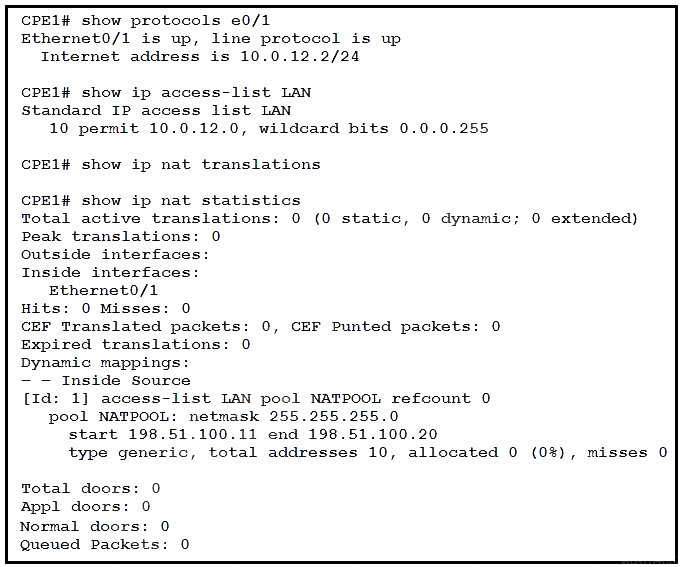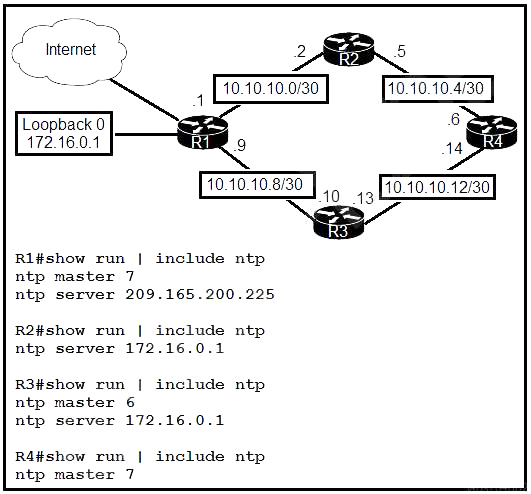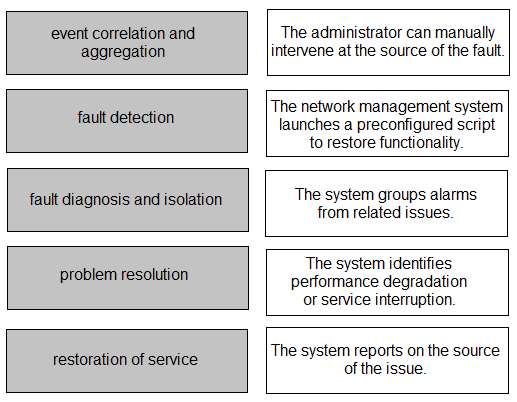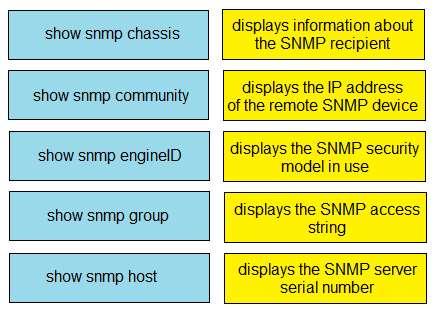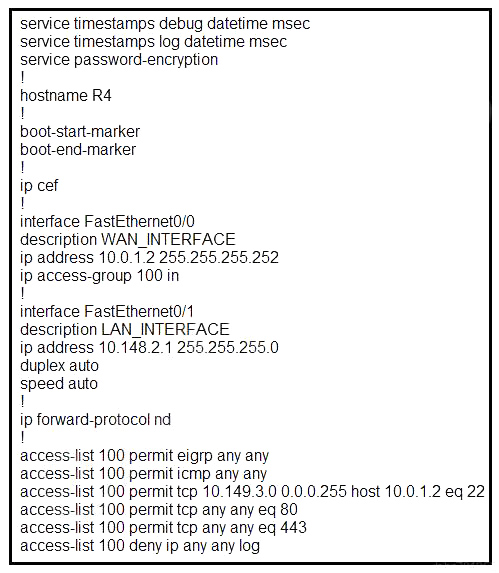What is a syslog facility?
A. host that is configured for the system to send log messages
B. password that authenticates a Network Management System to receive log messages
C. group of log messages associated with the configured severity level
D. set of values that represent the processes that can generate a log message
A. host that is configured for the system to send log messages
B. password that authenticates a Network Management System to receive log messages
C. group of log messages associated with the configured severity level
D. set of values that represent the processes that can generate a log message
